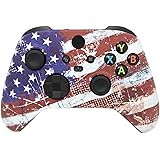The Fascinating Evolution of Game Controllers: From Simple Sticks to Sophisticated Systems
It is estimated that the global gaming market reached an impressive valuation of over $200 billion recently, highlighting the immense reach and popularity of video games. Yet, behind every high score and epic victory lies a crucial piece of technology: the game controller. As seen in the compelling animation above, the history of game controllers is a journey filled with ingenious innovations and radical shifts.
This remarkable evolution was not a sudden leap; conversely, it was a gradual process of refinement and adaptation. Early input devices were basic, but modern systems are highly complex. Understanding this trajectory allows us to appreciate how our interaction with virtual worlds has been profoundly transformed.
Early Innovations: The Dawn of Input Devices
In the nascent days of video gaming, the concept of a dedicated input device was rudimentary. Primitive interfaces were often integrated directly into arcade cabinets or home consoles. Consequently, gameplay experiences were simplistic, relying on minimal inputs.
However, a significant shift occurred with the introduction of the joystick. This device, resembling a simple lever, allowed for directional movement, a groundbreaking capability at the time. Unlike pushing buttons, the joystick provided a more intuitive way to steer virtual objects, which truly revolutionized early arcade titles like “Pac-Man” and “Space Invaders.”
The Age of Buttons and Directional Pads
As games grew in complexity, a greater variety of inputs was demanded. Therefore, supplementary buttons started appearing alongside joysticks. These buttons facilitated actions such as firing, jumping, or interacting with the game environment.
However, a major innovation in the evolution of game controllers was the directional pad, or D-pad. This cross-shaped set of buttons, popularized by Nintendo, offered precise directional control in a compact form. It was significantly more accurate for 2D platformers and fighting games compared to the often looser feel of joysticks. Conversely, the D-pad was less ideal for games requiring analog (variable) movement, paving the way for future developments.
The Analog Revolution: Beyond On/Off Inputs
The transition from 2D to 3D gaming environments presented a new challenge for input devices. Digital inputs, like the D-pad, only registered “on” or “off” for each direction. This meant characters could only move at a single speed or angle.
In contrast, analog sticks provided a continuous range of motion. This allowed players to walk slowly, run fast, or aim with varying degrees of precision, much like controlling the volume on a radio rather than just turning it on or off. The Nintendo 64 controller, for example, was a pioneer in integrating an analog stick, greatly enhancing the fluidity of 3D games.
Wireless Freedom and Ergonomic Designs
Early controllers were invariably tethered to consoles by restrictive cables. This often led to tangled messes and limitations on player movement. Wireless technology, however, dramatically changed the landscape of home gaming.
The freedom offered by wireless game controllers allowed players to sit comfortably wherever they pleased, untethered from their gaming system. Simultaneously, considerable thought was being invested in controller ergonomics. Designs were meticulously crafted to fit naturally within a player’s hands, which minimized fatigue during extended gaming sessions. Unlike the blocky designs of yesteryear, modern controllers are sculpted for comfort, much like a custom-fitted glove.
Motion Controls and Innovative Interfaces
The pursuit of immersive gaming experiences led to the development of motion controls. Instead of relying solely on buttons and sticks, these controllers allowed players to interact with games using physical gestures and movements. The Nintendo Wii, with its iconic remote, brought motion gaming to the mainstream.
Despite their initial popularity, motion controls were not universally adopted by all gaming genres. However, the technology continues to evolve, finding new applications in virtual reality (VR) and augmented reality (AR) systems. Here, controllers are often integrated seamlessly into the VR headset or used as hand-held tracking devices, further blurring the lines between the physical and virtual worlds.
The Modern Game Controller: A Symphony of Technology
Today’s game controllers are marvels of engineering, integrating a multitude of technologies. They commonly feature haptic feedback, which provides tactile sensations that correspond to in-game events, like the rumble of an engine or the impact of a hit. This enhances immersion considerably.
Conversely, many contemporary controllers also include touchpads, accelerometers, gyroscopes, and even built-in microphones. These additions expand the possibilities for gameplay, offering new ways to interact and customize experiences. The continuous drive for innovation ensures that the history of game controllers remains a vibrant and evolving narrative, promising exciting advancements for future generations of gamers.









